Rudy Rucker's Blog, page 44
March 2, 2012
Epic Dorkbot SF
My son Rudy and I both did presentations at the Dorkbot San Francisco meeting. Dorkbot has groups in cities around the world. Their motto: "People Doing Strange Things With Electricity."
The Dorkbot people managed to to a live streaming video of the show, and the stream is preserved online at ustream.
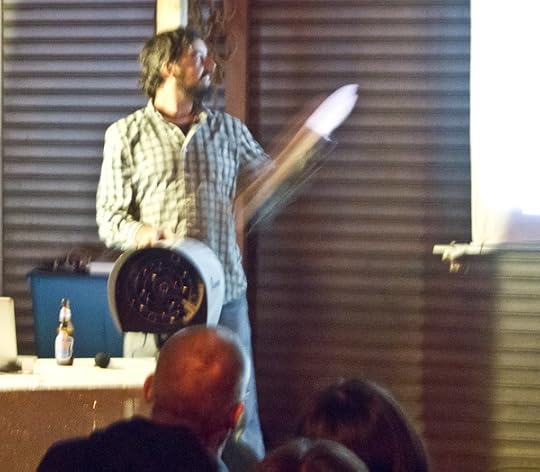
Rudy the younger started his routine about 30 minutes into the stream, and I came at the end. Rudy younger was talking about his punk-ethic wireless company, www.monkeybrains.net. They've put maybe a thousand small parabolic antennas up around the Mission district and beyond, using a surplus Jordanian military infrared laser for their long-haul connection. He unbolted his giant laser from its building-top mount and brought it in to point at the audience, you can see it here. People were flinching. Since it's infrared, nobody was sure if it was on. A gig per second of unseeable data.
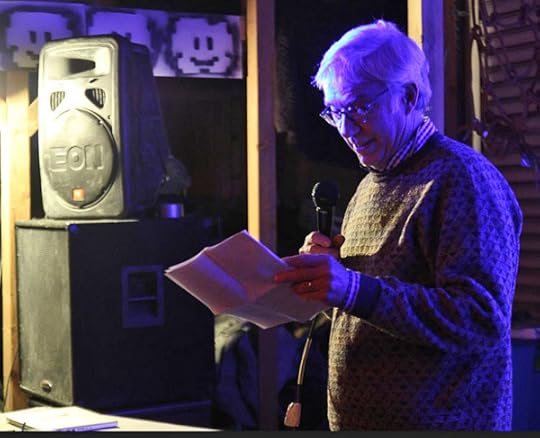
[Photo by Karen Marcelo.]
I taped and made a podcast of my part of show. I was reading a chapter called "Jane and Me" from my novel-in-progress, which has the working title The Big Aha. It's about the advent of some serious biotech in Louisville, Kentucky, and it's kind of darkly funny.
(Note that Feedburner only shows my most recent podcasts. For older audio files, see my archive on Gigadial, which runs back to 2005.)
You can click on the icon above to access the podcast via my Feedburner podcast station.

The space where we had the event was like a ground-level loft, totally full of Bay Area hipsters. The residents of the space had built these weird benches up on the walls. It felt like a Russian Revolutionary meeting of kulaks. Planning our digital revolution. None of the speakers really mentioned politics, though. At this point all that goes without saying. Internally, we've already seceded.

The Dorkbot SF organizer has been Karen Marcelo, a key scene-jammer who describes herself as a "bandwidth waster." I snapped a picture of Karen with the Mondo-era SF superfreak V. Vale, famed for his RE/Search publications. I was reminiscing with Vale about the shock value of his 1989 Modern Primitives which was the first place where many of us saw photos of people with incredibly gnarly piercings and tattoos. Who can forget Sailor Sid's highly decorated penis? Of course now the modern primatives are baristas in your local café, but Vale led them out of the darkness.

The other speakers besides the two Rudys were the post-art artist Mike Estee, who talked about his cardboard robots, and the post-science scientist Liam Holt who helped build a Syneseizure device that converts images into vibrations in speakers held against your face by a bondage mask. Somehow all the talks fit together.
An epic evening!
February 25, 2012
Transreal Books
At this point in my career and in the history of publishing, it seems reasonable for me to abandon—at least for some of my titles—printed books and commercial publishers. So I've started my own Transreal Books. I see at least three kinds of advantages to this move.
(1) I'm freed from commercial constraints to the formatting of my books—in particular an ebook can be very long, as in my Complete Stories ebook, or it can include color images, as in my projected Better Worlds ebook. And I'll be able to sell my books at a reasonable price.
(2) I can repeatedly revise a book without having to go through the complex process required for new print editions. For instance, as time goes by, I can keep adding more stories to Complete Stories.
(3) By becoming a publisher, I have the final say over what books I put out—and I receive a larger share of the royalties.
I've been seriously crunching the HTML and EPUB formats for a week or two—I'll say more about all that nutsy-and-boltsy stuff in some other post. But for today, here are the current and planned releases from Transreal Books!

Complete Stories
Buy as Amazon Kindle or Barnes & Noble NOOK.
Collected together in one mammoth volume: all of Rudy Rucker's science-fiction stories, a trove of gnarl and wonder. This, the first edition, includes stories from 1976 through 2011. As well as a volume's worth of fifteen new stories, Complete Stories includes all the tales from The 57th Franz Kafka, Transreal, Gnarl!, and Mad Professor. As well as Rucker's solo stories, we have collaborations with Bruce Sterling, Marc Laidlaw, Paul Di Filippo, John Shirley, Terry Bisson, and Eileen Gunn.

The Hollow Earth
Buy as Amazon Kindle or Barnes & Noble NOOK.
Hollow Earth is a classic work of American steampunk. In 1836, Mason Algiers Reynolds leaves his family's Virginia farm with his father's slave, a dog named Arf, and a mule named Dammit. Branded a murderer, he finds sanctuary with his hero, frustrated genius Edgar Allan Poe, and together they embark on an extraordinary expedition to the South Pole, and the entrance to the Hollow Earth. It is there, at the center of the world, where strange physics, strange people, and stranger creatures abound, that their bizarre adventures truly begin. 1st print edition Avon Books, 1990. 2nd print edition Monkeybrain Books, 2006. Transreal Books ebook version of 2nd edition, 2012.
And what's ahead? Here are some of the titles I'm planning:
Complete Essays
Better Worlds (paintings)
All the Visions. (early memoir)
Infinity and the Mind
The Fourth Dimension
Geometry, Relativity and the Fourth Dimension
Mind Tools
Journals 1990 – 2011
Yeah, baby. Free at last.
Transreal Press: Complete Stories
At this point in my career and in the history of publishing, it seems reasonable for me to abandon—at least for some of my titles—printed books and commercial publishers. So I've started my own Transreal Press. I see at least three kinds of advantages to this move.
(1) I'm freed from commercial constraints to the formatting of my books—in particular an ebook can be very long, as in my Complete Stories ebook, or it can include color images, as in my projected Better Worlds ebook. And I'll be able to sell my books at a reasonable price.
(2) I can repeatedly revise a book without having to go through the complex process required for new print editions. For instance, as time goes by, I can keep adding more stories to Complete Stories.
(3) By becoming a publisher, I have the final say over what books I put out—and I receive a larger share of the royalties.
I've been seriously crunching the HTML and EPUB formats for a week or two—I'll say more about all that nutsy-and-boltsy stuff in some other post. But for today, here are Transreal Press's current and planned releases!

Complete Stories
Buy as Amazon Kindle or Barnes & Noble NOOK.
Collected together in one mammoth volume: all of Rudy Rucker's science-fiction stories, a trove of gnarl and wonder. This, the first edition, includes stories from 1976 through 2011. As well as a volume's worth of fifteen new stories, Complete Stories includes all the tales from The 57th Franz Kafka, Transreal, Gnarl!, and Mad Professor. As well as Rucker's solo stories, we have collaborations with Bruce Sterling, Marc Laidlaw, Paul Di Filippo, John Shirley, Terry Bisson, and Eileen Gunn.

The Hollow Earth
Buy as Amazon Kindle or Barnes & Noble NOOK.
Hollow Earth is a classic work of American steampunk. In 1836, Mason Algiers Reynolds leaves his family's Virginia farm with his father's slave, a dog named Arf, and a mule named Dammit. Branded a murderer, he finds sanctuary with his hero, frustrated genius Edgar Allan Poe, and together they embark on an extraordinary expedition to the South Pole, and the entrance to the Hollow Earth. It is there, at the center of the world, where strange physics, strange people, and stranger creatures abound, that their bizarre adventures truly begin. 1st print edition Avon Books, 1990. 2nd print edition Monkeybrain Books, 2006. Transreal Press ebook version of 2nd edition, 2012.
And what's ahead? Here are some of the titles I'm planning:
Complete Essays
Better Worlds (paintings)
All the Visions. (early memoir)
Infinity and the Mind
The Fourth Dimension
Geometry, Relativity and the Fourth Dimension
Mind Tools
Journals 1990 – 2011
Yeah, baby. Free at last.
February 12, 2012
An Incompleteness Theorem for the Natural World
I spent the last few of days working on a philosophical essay for a collection of articles about Stephen Wolfram's 2002 book, A New Kind of Science. I'm a friend of Wolfram's and a big fan of his work. For much more about Wolfram's book and its reception, you can see my long 2003 review of it for the monthly magazine of the Mathematical Association of America.

But today I don't want to get into all that, I want to talk about my new essay, which is called "An Incompleteness Theorem for the Natural World." I'm very happy with the argument I presented there. The argument is really all that complicated—but I've been looking for it for about thirty years! I won't print the whole essay here, but I will print the introductory section to give you an idea of what I'm getting at. A lot of it is based on material in my book, The Lifebox, the Seashell, and the Soul, but just this week I saw how to present it in a much clearer light.
So here we go, the intro to my essay, "An Incompleteness Theorem for the Natural World."
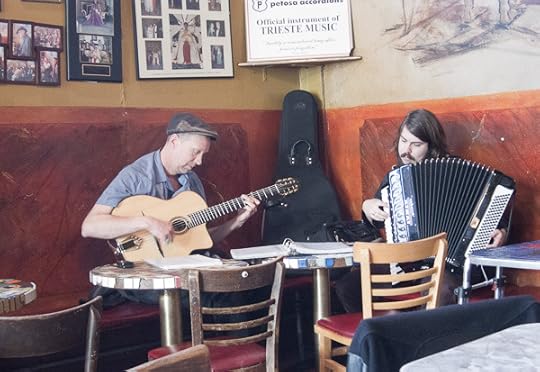
The philosopher Gottfried Wilhelm von Leibniz is perhaps best known for the fierce controversy that arose between him and Sir Isaac Newton over the invention of calculus. The S-like integral sign that we use to this day is in fact a notation invented by Leibniz.
When Leibniz was a youth of nineteen, he wrote a paper called "De Arte Combinatorica", in which he tried to formulate a universal algebra for reasoning, in the hope that human thought might some day be reducible to mathematical calculations, with symbols or characters standing for thoughts.
But to return to the expression of thoughts by means of characters, I thus think that controversies can never be resolved, nor sectarian disputes be silenced, unless we renounce complicated chains of reasoning in favor of simple calculations, and vague terms of uncertain meaning in favor of determinate characters.
In other words, it must be brought about that every fallacy becomes nothing other than a calculating error, and every sophism expressed in this new type of notation becomes in fact nothing other than a grammatical or linguistic error, easily proved to be such by the very laws of this philosophical grammar.
Once this has been achieved, when controversies arise, there will be no more need for a disputation between two philosophers than there would be between two accountants. It would be enough for them to pick up their pens and sit at their abacuses, and say to each other (perhaps having summoned a mutual friend): "Let us calculate."

Let's refer to this notion as Leibniz's dream — the dream of finding a logical system to decide all of the things that people might ever disagree about. Could the dream ever work?
Even if the dream were theoretically possible (which it isn't), as a practical matter it wouldn't work anyway. If a universal algebra for reasoning had come into existence, would, for instance, Leibniz have been able to avoid his big arguments with Newton? Not likely. People don't actually care all that much about logic, not even Leibniz. We just pretend to like logic when it happens to be on our side — otherwise we very often abandon logic and turn to emotional appeals.
This said, there's a powerful attraction to Leibniz's dream. People like the idea of finding an ultimate set of rules to decide everything. Physicists, for instance, dream of a Theory of Everything. At a less exalted level, newspapers and TV are filled with miracle diets — simple rules for regulating your weight as easily as turning a knob on a radio. On the ethical front, each religion has its own compact set of central teachings. And books meant to help their readers lead happier lives offer a simple list of rules to follow.
But, as I hinted above, achieving Leibniz's dream is logically impossible.
In order to truly refute Leibniz's dream, we need to find a precise way to formulate it. As it happens, formal versions of Leibniz's dream were first developed early in the Twentieth century.

An early milestone occurred in 1910, when the philosophers Bertrand Russell and Alfred North Whitehead published their monumental Principia Mathematica, intended to provide a formal logical system that could account for all of mathematics. And, as we'll be discussing below, hand in hand with the notion of a formal system came an exact description of what is meant by a logical proof.
There were some problems with the Russell-Whitehead system, but by 1920, the mathematician David Hilbert was confident enough to propose what came to be known as Hilbert's program.
(1) We will discover a complete formal system, capable of deciding all the questions of mathematics.
(2) We will prove that this system is free of any possible contradiction.
As Hilbert put it, "The conviction of the solvability of every mathematical problem is a powerful incentive to the worker. We hear within us the perpetual call: There is the problem. Seek its solution. You can find it by pure reason, for in mathematics there is no ignorabimus."

For a decade, scientists could dream that Hilbert's program might come true. And meanwhile mathematics and much of physics were being recast as formal systems. Scientific theories could now be viewed as deterministic processes for determining the truth of theorems. Leibniz's dream was nearly at hand!
But, then, in 1931, the logician Kurt Gödel proved his celebrated Incompleteness Theorem.
Gödel's Incompleteness Theorem. If F is a consistent formal system as powerful as arithmetic, then there are infinitely many sentences which are undecidable for F.
This means there can never be formal system of mathematics of the kind sought by Hilbert's program. Every formal system F about mathematics is incomplete in the sense that there are sentences G such that F fails to prove G or ~G, where ~G is the negation of G.
Gödel's sentences G take the form of statements that certain algebraic formulas have no solutions in the natural numbers. Normally these sentences include at least one very large numerical parameter that in some sense codes up the entire theory F. Wolfram has suggested that there might be some much simpler undecidable Gödelian sentences that involve very simple algebraic formulae.

Philosophers of science have wondered if there is something like an Incompleteness Theorem for theories about the natural world. One somewhat awkward approach might be to argue that if the natural world happens to be infinite, then we can in some sense represent the system of natural numbers as a list of objects within the world and then go on to claim that the usual undecidable Gödel statements about arithmetic are also statements about the natural world.
But, as I discuss in my 1982 book, Infinity and the Mind, this isn't a satisfying approach. If we wanted to have number theory be a subset of a theory W about the physical world, we'd need for W to single out an infinite set of objects to play the role of the numbers, and W would also need to define relations the correspond to numerical addition and multiplication.
What we really want is a proof—or at least a plausibility argument—for a Natural Incompleteness Theorem that asserts the existence of undecidable sentences that are about natural physical processes—as opposed to being about the natural numbers in disguise.
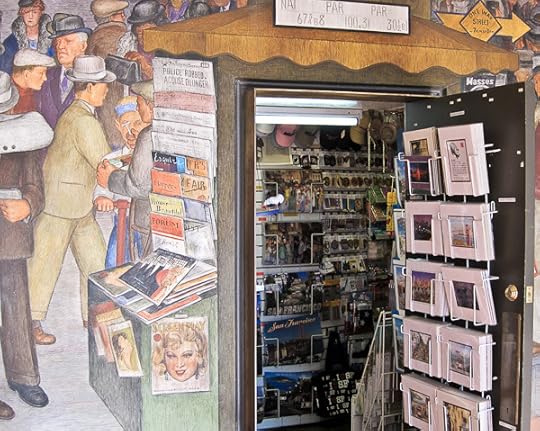
Wolfram's analysis of computation in his A New Kind of Science opens a path. The first step is to accept the idea that natural processes can be thought of as computations. And the second step is to argue for some form of Wolfram's Principle of Computational Equivalence.
Wolfram's Principle of Computational Equivalence (PCE): Almost all processes that are not obviously simple can be viewed as computations of equivalent sophistication.

In my essay I show that, starting from Wolfram's two steps, we can prove a Natural Incompleteness Theorem. My method will be to make use of Alan Turing's 1936 work on what he called unsolvable halting problems. And rather than using the full strength of Wolfram's somewhat controversial Principle of Computational Equivalence, I'll base my argument on a weaker assumption, which I call the Halting Problem Hypothesis. And we end up with the following Natural Incompleteness Theorem.
Natural Incompleteness Theorem. For most naturally occurring complex processes and for any correct formal system for science, there will be sentences about the process which are undecidable by the given formal system.
This is, I believe, a clean statement of new result—and may be of real importance to the philosophy of science. Although Wolfram has pointed out some specific examples of undecidable statements about natural processes, he didn't mange to state the general Natural Incompleteness Theorem.
But now we have a Natural Incompleteness Theorem telling us that every possible complex natural process is going to have undecidable sentences associated with it! Undecidability is everywhere, and all of our theories about nature must remain incomplete.
I'm very stoked.
February 9, 2012
Podcast. Around North Beach.
Reminder: I'll be reading from my autobiography Nested Scrolls at an SF in SF gathering at 7 PM on Saturday, February 11.

I'll be joined on the podium by the eminent SF writers K. W. Jeter and Jay Lake, also reading from their work. If you come, be aware of the huge Chinese New Year's Parade in the same neighborhood…in fact come early and watch the parade for awhile before our reading.

I was already up in SF earlier this week, staying in North Beach and giving a reading from my small book Surfing the Gnarl at The Green Arcade bookshop on Market Street near Gough St., a great little store with very cool and diverse pickings. Curated with wit and attitude by owner Patrick Marks.
I made a podcast of the Green Arcade reading, which is introduced by Terry Bisson. You can click on the icon below to access the file via my Feedburner podcast station.
(Note that Feedburner only shows my most recent podcasts. For older audio files, see my archive on Gigadial, which runs back to 2005.)
My wife and I were walking around SF enjoying ourselves. I like how multicultural the city is, how busy, with the sun so bright and the air so clear and intense. Like water.

I always dig seeing the freaky window display at Aria on Grant Street near Washington Square.

Everything shaped and colored so nice in the morning sun.
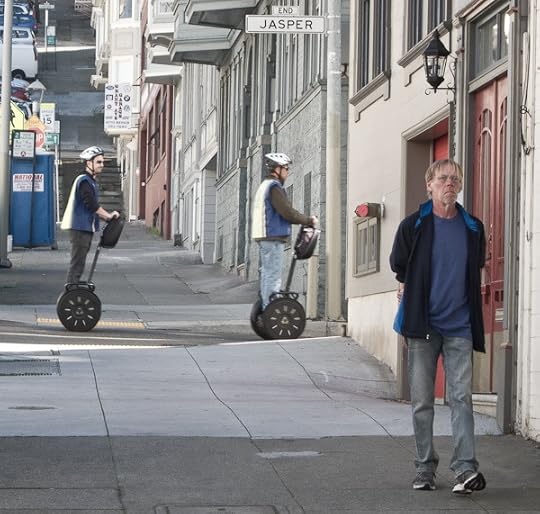
But beware the Invasion of the Goobs on … blessedly I've temporarily managed to forget the name of those obnoxious roller vehicles. A tour of twenty of them went by! Me taking their picture I was, of course, a collateral Goob invader, come to think of it. "It's okay, I'm from near San Jose."
February 2, 2012
Skungy Art. "Surfing the Gnarl." Read Feb 7, Feb 11.
I have a couple of upcoming readings on Feb 7 and Feb 11, but first I want to tell you about my new painting , Loulou and Skungy.

"Loulou and Skungy," oil on canvas, February, 2012, 30" x 30". Click for a larger version of the image.
Loulou is the somewhat mysterious woman in green, Skungy is the rat, and the guy holding the rat is named Morton Plant. At present this is like an illustration of an unknown proverb or a forgotten fable. I don't entirely know what's going on. But I do have some ideas, as this is meant to be a previsualization of a scene in my next novel, The Big Aha. Loulou is luring Morton and his helper-rat Skungy to follow her.
The composition was inspired by a Joan Brown painting The End of the Affair, which I just saw in an exhibit that's at the San Jose Museum of Art till March 11. And I used a thick medium to build up an impasto finish with kind of a van Gogh look on the left. As always, originals and prints of my paintings are for sale on my Paintings page.
I have a small new book out, it's called Surfing the Gnarl, and it's from the "PM Outspoken Authors" series at PM Press in Oakland.
The book has two of my more outrageous short stories, a new essay of mine about science and literature called "Surfing the Gnarl," and an interview conducted by Terry Bisson, the series editor.
I'll be having a launch party for this slim volume at the funky Green Arcade bookstore near Gough and Market Street in San Francisco, 7 PM, Tuesday, February 7.
Looking a little further ahead, I'll be reading from Surfing the Gnarl or perhaps my autobiography Nested Scrolls or possibly my recently completed The Turing Chronicles at an SF in SF gathering at 7 PM on Saturday, February 11. I'll be joined on the podium by the eminent SF writers K. W. Jeter and Jay Lake, also reading from their work.
January 31, 2012
Whose News?
You may have noticed that in my blog posts, I tend not to talk directly about the political stories that you see in the news. My preference is to post about the things that you don't see in the news. Found art, surreal events, philosophical ruminations, science-fictional concepts, notes on the craft of writing, day-to-day beauty found within the real life unfolding around me.

Whenever I see a news story, my first thought is: Why do "they" want me to think about this? Who are "they"? An age-old question. The one-percenters, the media barons, the commercial interests, sure. I've always felt that there's no essential difference among the three elements of TV: (1) News, (2) Ads, and (3) Entertainment. All are selling fear of death, lust for glamour, and a desire to buy.

Having known a lot of politically active friends over the years, I'd also suggest that the news-cycle-spinning "they" also includes the political junkies and those with a perpetual longing for a distraction from daily life. "I can't clean up the house while XXX are suffering in YYY!"

There's always something terrible going on…somewhere…and I don't like to give consensus-reality's bad news a majority of my mind. I only have the one life—must I spend all of it waiting for when it's officially okay to be happy?
Restating my position one more time: all news is in one way or another a lie, a hype, a scam, and a distraction from the warm human faces and the gnarly nature of the now moment.

So that's why I avoid getting into political threads on Rudy's Blog. I want it to be "about" the neglected topics other than the concerns shoved down our throats by the media and the countermedia news.
Long live transfinite mountains, the hollow earth, time machines, fractal writing, aliens, dada, telepathy, flying saucers, warped space, teleportation, artificial reality, robots, pod people, hylozoism, endless shrinking, intelligent goo, antigravity, surrealism, software highs, two-dimensional time, gnarly computation, the art of photo composition, pleasure zappers, nanomachines, mind viruses, hyperspace, monsters from the deep and, of course, always and forever, the attack of the giant ants!
January 26, 2012
Future Ads. Fun with Wacky Matter.
I'm still flapping, still trying to get fully airborne on my intended next novel, The Big Aha. But today instead of flapping, I'm playing with my blog. As so often happens here, the pictures have very little to do with the words.

View of my home office from my desk chair, January, 2012, pan made with AutoStich app on an iPhone. Click for a larger version of the image.
I've been wondering what advertising will be like in eighty or a hundred years. Nobody reads anymore or even watches a movie. It's all web nuggets. They don't "cruise" so much as "harvest" the web. The ads are like viruses, like smart drones, they hound you, they're targeted to individuals.

In the future, some real work is being done on getting ads into dreams. Particularly if you sleep with your personalized web cruiser on. Maybe you get used to the ads in your dreams, and the ads help you sleep. As it happens, just last night, I kept dreaming I was Googling things in my dreams. How terrible.
Maybe your personal web cruiser can synch the ads you get with with you're actually seeing in the real world. The ad-mongers might give you fake sense of synchronicity. If they can process your realworld inputs a bit faster than your brain does, and then feed in the kicker maybe ad just a a split second before you see the real thing. And you're like, wow!

I'm also thinking about the idea that, in the future, we can use quantum engineering to make wacky matter.
The way this works is that computers of the future use quantum computation. Atoms and molecules are always doing quantum computations, even when they're just sitting around. These computations are in fact rich enough to emulate anything that an ordinary computer could do. If we can just get the hang of how to do it, we can start having computers that are chairs, rocks, air currents, glasses of water, candle flames—whatever.

Okay, suppose that any bit of matter as carrying out a quantum computation, and that we've learned to interface with these computations and tweak them.
(Fun option) You dose your surroundings to make them more vibrant, more cartoony, more congenial. Slogan I've mentioned before, "Instead of you getting high, your house gets high!" At first it seems harmless and things snap back.

Wild turkeys spotted across the street. Gobbling softly, under their breath.
(Fear option) What if something like a computer virus infects matter, perhaps changing the laws of physics to make our world more congenial for some evil darkside hackers. Or maybe even for some type of aethereal aliens—come to think of it, I used that power chord with the Peng in Hylozoic, so this time let's keep it more of a near-future actually-happening-in-Silicon-Valley thing, and funner.

(Change option) What if the repeatedly wacked space in some area reconfigures itself—and settles to a new stable attractor. Like that "false vacuum" power chord. Our local spacetime becomes a new domain. Or maybe just the body of one character becomes a new domain.

"What, ME cyberpunk?"
Good scene, with the wacked space. Like the ultimate hungover friend scene. He appears, tottering, and he's somehow altered the dimensional "signature" of the spacetime in his body. His body has, like, two-dimensional time and two-dimensional space. He slides into your room, coming under your door like a menu to a Chinese restaurant.
And then we get a page or two of this wacked dude describing how it feels to be in 2D time.
January 19, 2012
Berlin #2
More pictures of Berlin today, taken in late November, 2011. This follows on my earlier post, "Berlin #1".

Despite the WW II bombing, there's still a lot of nice old buildings around. And of course the industrious Germans have rebuilt many of those buildings as well. I like this type of nineteenth century look. Serious attics and garrets up there.
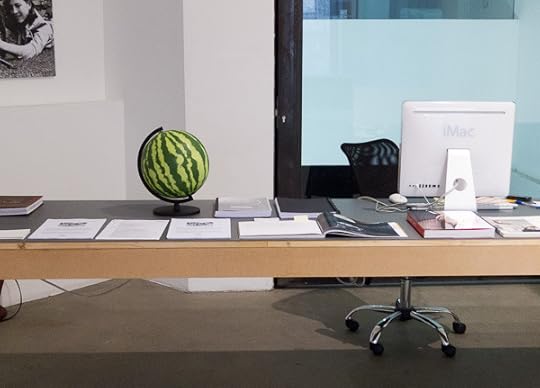
I wandered into an art gallery featuring a show by an Italian woman whose current motif was round watermelons. They even had a melon/globe on the desk.

The big Wheel at the Christmas market near our hotel. Der grossen Rad. The Berliner Dom in the background.

We went to another Christmas market, this in the Gendarmenplatz, one of the more elegant squares in Berlin with, I think, three separate cathedrals on it, also a concert hall. The Christmas markets are mostly about food, as opposed to being about classy, crafty decorations for your tree. This one restaurant had set up an enclosed dining room, heated, and with a transparent roof. A real treat.

Looking up into the dome the awesome Berlin cathedral, that Berliner Dom…it's a Lutheran cathedral, meant to be a match for the Catholic ones. I love how the great dome's circles work together in this kind of image. Mathematics on parade.
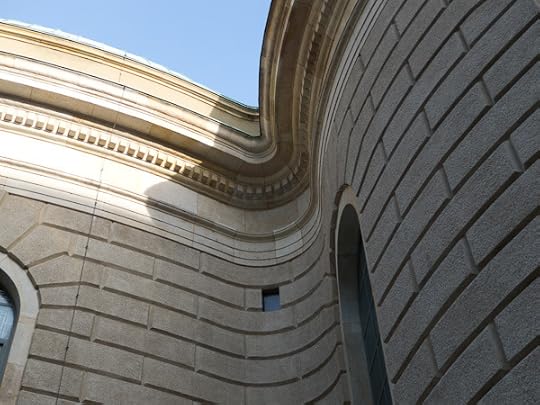
The round church of St. Hedwig has lovely curves. In the future, we'll grow our buildings and everything will be like this.

Berlin has many museums. As Berlin was, for a time, two separate cities—East and West—many standard cultural institutions, like museums, concert halls, and opera houses, are duplicated, one for each half.
This one museum is in the old "Hamburg train station," and it has contemporary art, including this great eight-foot-tall mask by Keith Haring. I think it's the best of his works that I've ever seen. Wonderful cafe in this museum as well.

I like these guys moving around a statue of some high-level guy. Kind of a metaphor for…something.
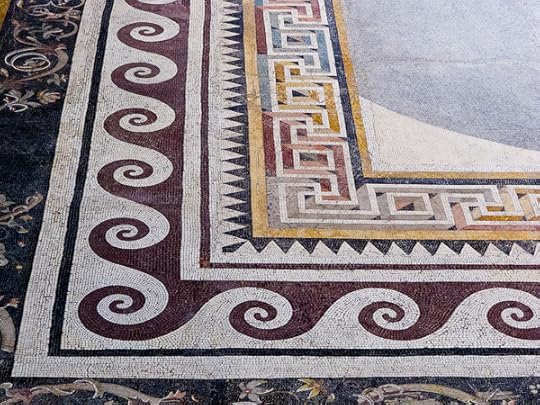
In the Pergamon museum we looked at some Greek antiquities, including this tiling of a floor. I like how the square forms in the inner ring do a visual reversal like a Necker cube. And the wavy yin-yang nested scrolls on the other ring.

We went to a residential neighborhood where lots of young parents live. I always like these food-people statues, particularly when they get this battered street-person look. And he's eating frags of his own brain. Fry-brain.
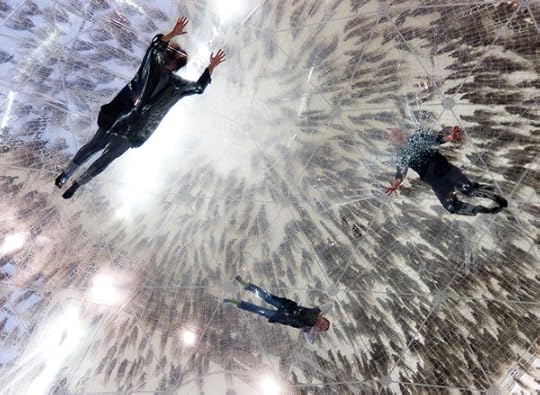
The Hamburger train station museum had a special installation of big inflated plastic domes by an artist. This one had two levels, and I went inside to look up at the people on the next level. Very spacy.

We saw a piano soloist in the concert hall off the Gendarmenplatz square. The inside of the hall was insanely elegant, like Viennese pastry.

One day we rode an urban-rail train a few miles out of the center of Berlin, going deep into the old East zone. The buildings in the East zone have this very solid, utilitarian look.

A cool old statue of a devil seen in a museum. As seen in artworks, devils always seem to be having more interesting lives than angels. I think an angel is in fact standing on this guy, but he's making some plans anyway, sleazy city slicker that he is.

The basement of the Berliner Dom is this, like, living-room or non-living-room filled with giant, ornate nineteenth-century caskets for members of the then-ruling families. Kind of a horrible place, deeply creepy.

A statue of Death perches at the foot of one casket. "Oh, here's your name. Got your spot all set for you here."

A seriously classical-looking museum on the Museum Island. I love this kind of extravagent stuff. To hell with that 1950s-1960s "less is more" crap. More is more.

We wandered into this cafe of the Bode museum on the Museum island. Monumental European luxury, a marble-columned cafe with a hundred-foot-high ceiling. And marzipan cake. And hardly anyone else there.

Looking down at the Spree River from our hotel we could see an occasional barge chuffing by.

The East Berliners had their own icons for the traffic lights, including this "Ampelman" or "Traffic Light Man." He's kind of a mascot of the city now.

Wandering around town we passed a weathered old Amerika Haus or "America House." These are libraries with American books and magazines, in English, set up in the 1950s to promote a sense of unity with the US. They all looked exactly like this one. When I was a boy visiting my grandmother in Hannover, Germany, I liked to go to the local Amerika Haus to get science-fiction books.
I still remember finding a story anthology with a tale about a guy who goes to a lecture on the fourth dimension and dozes off during the lecture to find himself surrounded by sentient higher-dimensional spheres. I don't remember how that story ends. Maybe the guy gets a Ph.D. in mathematics and becomes an SF writer!
January 13, 2012
Reading NESTED SCROLLS at Borderlands.
As I've mentioned before, the US edition of my autobiography, Nested Scrolls, is out from Tor Books.
This Saturday, January 14, at 3:00 pm, I'll be giving a reading from Nested Scrollsat the fabulous and cozy Borderlands Books (and cafe) on Valencia Street in San Francisco. We'll have a Q & A session after the reading, and we'll be giving away a large, high-quality art print of one of my paintings.
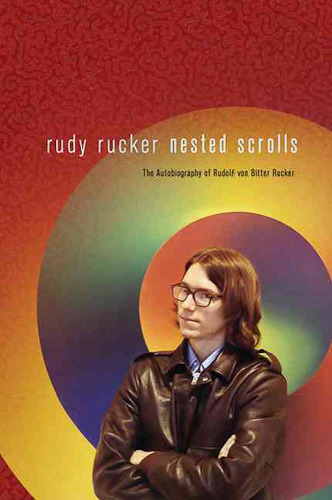
Come on over!
Rudy Rucker's Blog
- Rudy Rucker's profile
- 583 followers







